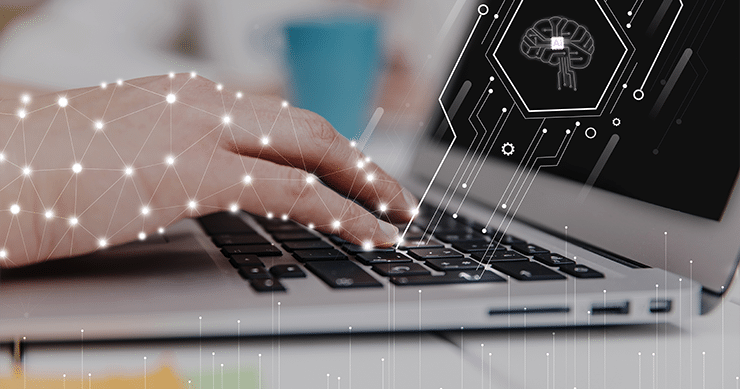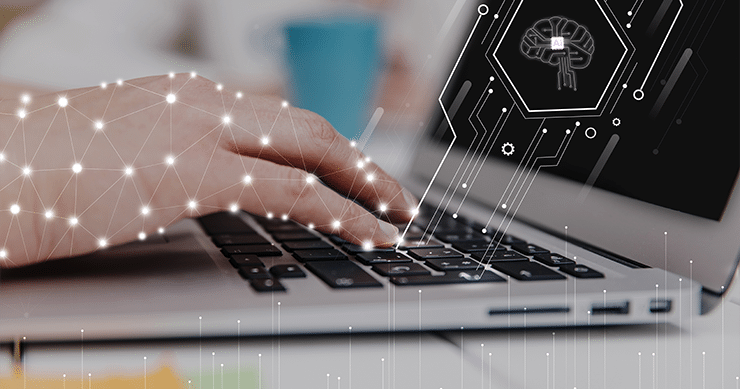
The narrative of technology surpassing human intelligence and altering the course of humanity is a recurring theme in science fiction. While this dystopian scenario has not yet unfolded in reality, the recent debut of ChatGPT from OpenAI felt like a trailer for the real thing.
This development has not gone unnoticed by high-profile figures in the tech industry, including Apple co-founder Steve Wozniak and Tesla’s CEO, Elon Musk. They’ve issued an open letter urging companies to exercise caution when embarking on “giant AI experiments.” They contend that large-scale AI projects can “pose profound risks to society and humanity” without oversight and thoughtful management. Their appeal includes a call for a temporary pause on further AI development and an insistence on creating governance systems and regulatory authorities dedicated to AI.

AI is Just Different Than Anything Else
AI stands apart from many technological advances due to its unparalleled potential for societal transformation. When we draw historical comparisons, we find parallels with inventions such as the automobile and the Internet, which were revolutionary forces that dramatically altered the fabric of our existence.
Harnessing the Promise of GRC AI
The conversation surrounding AI and risk management has not skipped over the world of GRC. AI profoundly benefits the Governance, Risk Management, and Compliance (GRC) sector. By capitalizing on the capabilities of AI, organizations can enhance their risk mitigation strategies, augment compliance efforts, and streamline governance processes.
The application of Artificial Intelligence in GRC integration and cybersecurity holds immense promise. AI has demonstrated its potential to revolutionize various industries by enhancing efficiency, accuracy, and automation.
To further explore the advantages of AI and GRC evolution, let’s delve into how AI is revolutionizing this industry.
The Role of AI in Governance, Risk, and Compliance
AI technologies, such as machine learning, natural language processing, and data analytics, are revolutionizing how organizations approach GRC and cybersecurity. These technologies empower businesses to enhance risk assessment, regulatory compliance, and threat mitigation efforts. Here’s how AI plays a pivotal role:
1. Predictive Risk Assessment
One of the primary advantages of AI is its ability to predict risks before they escalate into significant threats. AI models can forecast potential risks and vulnerabilities by analyzing historical data and identifying patterns. This enables organizations to take proactive measures to mitigate these risks, reducing the likelihood of costly security incidents or compliance breaches.
2. Regulatory Compliance
Staying compliant with an ever-expanding list of regulations and standards is a formidable challenge for many businesses. AI can help by automating the monitoring and management of regulatory changes. AI algorithms can quickly scan and analyze regulatory updates, ensuring organizations stay updated with their obligations, which is crucial in highly regulated sectors such as finance and healthcare.
3. Advanced Threat Detection
The evolving nature of cyber threats demands equally advanced defense mechanisms. AI-powered cybersecurity systems can detect anomalies and potential threats in real time. These systems use machine learning to identify suspicious activities or patterns, allowing swift responses to mitigate attacks before they cause significant damage.
4. Third-party Risk Management
In today’s interconnected business landscape, third-party vendors and suppliers can introduce significant security risks. AI can streamline the assessment and monitoring of third-party risks by analyzing vendor performance, evaluating their cybersecurity measures, and identifying potential vulnerabilities within the supply chain.
Key Benefits of AI in GRC and Cybersecurity
Integrating AI into GRC and cybersecurity practices offers several key benefits for organizations:
1. Enhanced Efficiency
AI-driven automation can significantly reduce the time and effort required to manage GRC and cybersecurity tasks. It enables organizations to prioritize resources effectively and focus on critical areas that require immediate attention.
2. Reduction of False Positives
False positives in cybersecurity can be time-consuming and costly to address. AI systems excel in distinguishing genuine threats from false alarms, helping organizations allocate resources more efficiently and minimize unnecessary disruptions.
3. Real-time Monitoring and Response
Traditional cybersecurity measures rely on manual monitoring, leading to delays in identifying and addressing threats. AI-powered systems provide real-time monitoring and rapid responses, reducing the window of opportunity for cybercriminals.
4. Data-driven decision-making
AI empowers organizations to make data-driven decisions in managing risks and compliance. By analyzing large datasets, businesses can gain valuable insights that inform strategic choices, improving overall risk management.
Understanding AI’s Foundations and Its Limitations
AI is a highly advanced mathematical model designed to learn and improve within specific limits. But it’s important to realize that AI, as we know it today, can’t suddenly wake up and solve all of humanity’s complex problems, like curing diseases or ending poverty. The idea that AI can be a universal solution, often called AI Singularity, is not only overly optimistic but could also be dangerous. Why? Because AI’s performance depends on the data it’s trained on, and that data comes from humans. So, if the data has biases, AI inherits those biases, which means it’s far from being perfect.
AI: Where It Shines
AI shines in specific situations where everything is well-defined and structured. It’s a megastar in tasks like generating content, analyzing medical images, and even playing chess. In these scenarios, AI’s ability to crunch massive amounts of data quickly is incredibly valuable. However, remember that AI is only as good as its fed data. Any deviation from that data can lead to reduced accuracy.
AI: Where it Struggles
Where AI starts to stumble is when you throw it into more ambiguous situations. Take image classification, for instance. We, humans, can quickly tell the difference between animals, people, and objects in pictures. (think of the captchas you sometimes need to access web pages.) AI, on the other hand, needs exact data and conditions to get it right. Even tiny variations can lead to significant errors.
So here’s the thing. AI is a “black box.” It works based on predefined rules and delivers results without explaining why. The responsibility for understanding and interpreting these results falls on humans. So, in complex and rapidly changing environments (hint: information security), human involvement becomes crucial.
The Synergy of AI and Human Intelligence
AI undeniably boosts Governance, Risk Management, and Compliance (GRC), and cybersecurity by tackling known threats, using threat intelligence, and handling routine tasks.
But in the ever-changing world of IT and the increasing sophistication of cyber threats, human expertise is irreplaceable. The future of GRC and cybersecurity lies in the collaboration between AI and human intelligence, blending AI’s speed and consistency with human insight and contextual understanding. It’s this teamwork that will lead to a safer digital landscape.
What is Machine Learning?
Machine learning (ML) is a subfield of AI that focuses specifically on developing algorithms and models that enable computers to improve their performance on a task through learning from data. ML systems are designed to recognize patterns, extract meaningful insights, and make predictions or decisions without being explicitly programmed.
In machine learning, models are trained using historical data. They learn to generalize from this data and apply their knowledge to new, unseen data. ML can be categorized into various types, including:
- supervised learning, where models learn from labeled data
- unsupervised learning, where they discover patterns in unlabeled data
- reinforcement learning, where they make decisions to maximize a reward in a specific environment
AI and ML: Key Differences
- Learning Capability: The primary distinction is in the learning capability. AI is a broader concept encompassing rule-based systems, while ML is specifically about learning from data.
- Task-Specific vs. General Intelligence: AI aims to achieve general intelligence and adaptability across various tasks. At the same time, ML is task-specific and improves its performance through data for the particular task it’s designed for.
- Human-Mimicking vs. Data-Driven: AI aims to mimic human-like intelligence, understanding, and adaptability, while ML is data-driven and focuses on improving task performance by learning from data patterns.
Sorting Hype from Reality: Artificial Intelligence in Cyber Security
Many cybersecurity vendors claim their products are AI-powered. But a closer look reveals that most aren’t using “real” AI. Here’s why:
Machine Learning is not “Real” AI
Some pros in the field have pointed out that what’s primarily used in AI-powered GRC technologies is machine learning, not true AI. Machine learning is a subset of AI focusing on algorithms allowing computers to learn and make data-based decisions. While machine learning is precious in cybersecurity for tasks like spotting anomalies, it’s not quite the all-encompassing intelligence that popular culture envisions.
In marketing, adopting AI has become more about generating buzz than accurately representing product technology. Vendors slap the “AI” label on their solutions to grab attention and stand out from the competition, implying a level of sophistication that may not be entirely accurate.
True AI in GRC? Not Just Yet
The idea of fully realized AI in cybersecurity is still a work in progress. True AI would mean systems that actively adapt, reason, and respond like humans, not just following predetermined tasks based on data patterns. At present, most solutions haven’t reached this advanced level of AI development.
Beyond the Horizon
While the advantages of AI in GRC and cybersecurity are already significant, the field continues to evolve. As AI technology advances, we can anticipate further refinements and innovations. Areas like vendor-risk management, financial risk assessment, environmental and social governance (ESG), and anti-money laundering (AML) are also ripe for AI-driven enhancements.
The post The Benefits of Employing AI in GRC appeared first on Centraleyes.
*** This is a Security Bloggers Network syndicated blog from Centraleyes authored by Michelle Ofir Geveye. Read the original post at: https://www.centraleyes.com/the-benefits-of-employing-ai-in-grc/
如有侵权请联系:admin#unsafe.sh